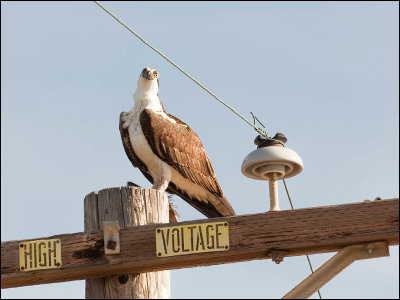'Acoustic lighthouse' that emits white noise may be useful to prevent bird collisions

Birds collide with skyscrapers, communication towers, turbines for wind power generation, etc. more than imagined, and it is estimated that
Field testing an “acoustic lighthouse”: Combined acoustic and visual cues provide a multimodal solution that reduces avian collision risk with tall human-made structures
https://journals.plos.org/plosone/article?id=10.1371/journal.pone.0249826
Acoustic Lighthouse field tests: Engineered noise to reduce bird-structure collisions | William & Mary
https://www.wm.edu/news/stories/2021/acoustic-lighthouse-field-tests-engineered-noise-to-reduce-bird-structure-collisions.php
We Could Harness White Noise to Save The Lives of Millions of Birds. Here's How
https://www.sciencealert.com/sound-could-save-birds-from-slamming-into-tall-buildings-wind-turbines-here-s-how
According to Timothy Boycott, a conservation biologist at William and Mary University, who led the research team, a large number of birds collide with man-made objects and die each year, and in recent years they have been built one after another due to environmental concerns. It is said that the turbine for wind power generation that is being used is a structure that is killing many birds in particular.
'Birds move along the flow of the wind, but we also want to use the same wind energy, so we tend to place wind turbines in the same area where birds move,' Boycott said. , Point out that collisions are more likely to occur because humans and birds are trying to take advantage of the same wind flow.
Nature maintenance activists have tried to reduce collisions between birds and structures by using different colors for buildings, ropes, and lasers. However, many birds have eyes on both sides of their heads that do not look straight ahead, and in-flight birds often anatomically focus on 'downward rather than forward'. , These measures are not always effective. So Boycott and his team used a 'white-noise speaker' to tell birds that they were approaching a human structure, thinking that a warning that appeals to the auditory sense rather than the visual sense might be effective. I did an experiment.
The research team chose two communication towers on the Delmarva Peninsula on the east coast of the United States, which is the path of migratory birds, as a place to test the 'acoustic lighthouse' that emits white noise. Boycott explained why he chose this location: 'This is a geographical area where so many birds move. These birds travel south along the Atlantic route, sometimes reaching the edge of South America. I will. '

The research team installed an upward speaker at the base of the communication tower, emitted white noise different from the environmental sound toward the birds heading south, and photographed the reaction of the birds passing around with a camera. White noise was transmitted for 3 hours a day, and data was collected for 6 days. For comparison, data was collected under conditions that did not generate white noise. Also, in the experiment, we used two kinds of frequencies, '4 to 6kHz', which matches the sound that birds hear on a daily basis, and '6 to 8kHz', which is higher than the sound that birds usually hear, and reacts according to each frequency. He also confirmed whether there was a difference in frequency.
As a result of analyzing the data of more than 1500 birds collected under the three conditions of 'frequency of 4 to 6 kHz', 'frequency of 6 to 8 kHz' and 'no white noise', if white noise is emitted, the bird approaches the communication tower. It turns out that the too much rate is reduced by 12-16%. Birds that hear white noise slow down their flight speed and significantly deflect their flight trajectory, especially in cases where the risk of collision is high, the researchers say.
In addition, when the difference in reaction depending on the frequency of white noise was investigated, it was found that the 'frequency of 4 to 6 kHz' moved the bird away from the communication tower earlier than the 'frequency of 6 to 8 kHz'. 'We found that birds move the slowest in the low frequency range of 4-6kHz. Birds are now farther away from the communication tower and farther away from the tower,' Boycott said. rice field.
'Most of the previous studies on collisions have counted the number of birds killed in the collision and collected mortality data,' Boycott said in a previous study. While the research to count birds that died in collision takes an enormous amount of time to collect data, this research focuses on 'bird behavior', so the feature is that data can be obtained in a short experimental period. In future studies, the research team argues that it is important to investigate how differences in flight behavior change actual mortality.

Boycott et al. Said that the white-noised acoustic lighthouse could pose new challenges, such as impacts on other wildlife and increased stress, but 'sound warnings are a step in the right direction. It could be. It would be of great value to extend this test to other periods, other locations, and other structures that could cause collisions. '
Related Posts:







